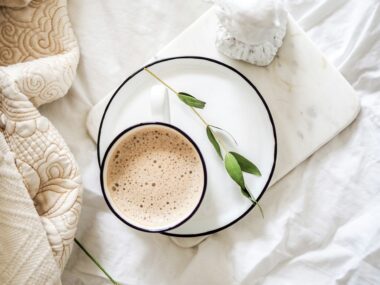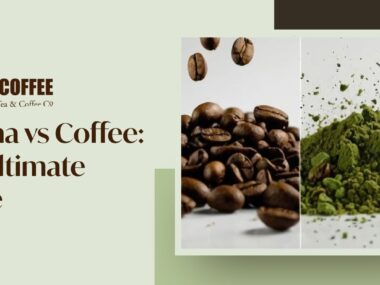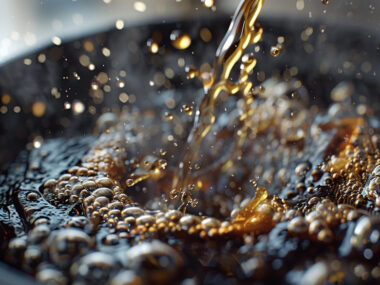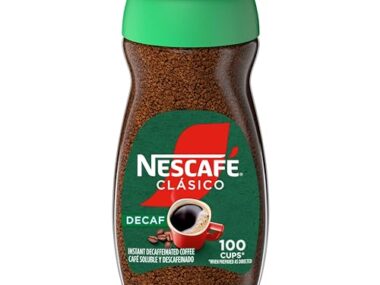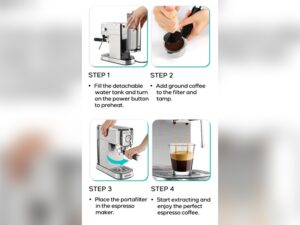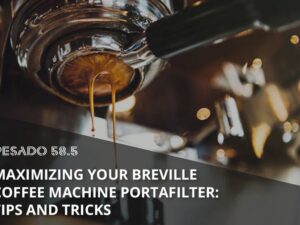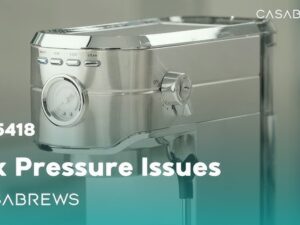Want maximum caffeine in your cup? Find out Which Coffee Contains the Most Caffeine and power through your day with bold, rich, energizing coffee.
Many people wonder which coffee gives them the biggest caffeine boost to power through their day. Knowing which coffee contains the most caffeine can change how you start your mornings and keep you energized longer. You’ll discover the strongest coffee options and learn how to choose the perfect cup that matches your energy needs.
Keep reading to find out which coffee will give you the kick you’ve been searching for!
Caffeine Basics
Caffeine is a natural substance found in many drinks. It makes coffee a popular choice worldwide. Understanding caffeine helps explain why some coffees feel stronger than others. This section covers basic facts about caffeine and its effects.
What Is Caffeine?
Caffeine is a stimulant found in coffee beans, tea leaves, and other plants. It helps keep you awake and alert. People use caffeine to reduce tiredness and improve focus. It works by affecting your brain and nervous system. The amount of caffeine varies in different drinks.
How Caffeine Affects The Body
Caffeine blocks a brain chemical that makes you feel tired. This increases alertness and energy. It can improve mood and concentration for a short time. Too much caffeine may cause jitters or trouble sleeping. The effects depend on how much caffeine you consume and your body size.

Credit: drinkwildera.com
Coffee Types And Caffeine Levels
Coffee types vary in flavor and caffeine content. Knowing caffeine levels helps you choose the right drink. Different brewing methods extract different amounts of caffeine. Serving sizes also affect the total caffeine you consume. Let’s explore common coffee types and their caffeine levels.
Espresso Shots
Espresso contains about 63 mg of caffeine per shot. It is a small, concentrated coffee. The brewing process forces hot water through finely ground beans. Despite its size, espresso packs a strong caffeine punch. Many coffee drinks use espresso as a base.
Drip Coffee
Drip coffee usually has 95 mg of caffeine per 8-ounce cup. It is made by pouring hot water over ground coffee. The water slowly passes through a filter. This method extracts more caffeine than espresso per serving. Drip coffee is popular for daily drinking.
Cold Brew
Cold brew coffee often has 100 mg or more caffeine per 8-ounce serving. It is brewed with cold water over many hours. This slow process pulls caffeine from the beans gently. Cold brew tastes smooth and less acidic. It is popular for summer or iced coffee lovers.
Instant Coffee
Instant coffee contains about 30-90 mg of caffeine per cup. It is made from brewed coffee that is dried into powder. This type is quick and easy to prepare. Instant coffee usually has less caffeine than drip or espresso. It suits those needing fast caffeine boosts.
Decaf Coffee
Decaf coffee has about 2-5 mg of caffeine per cup. The beans go through a process to remove most caffeine. It tastes similar to regular coffee but with very low caffeine. Decaf is good for people avoiding caffeine. It allows enjoying coffee flavor without the buzz.
Brewing Methods Impact
Brewing methods affect how much caffeine ends up in your cup. Different ways of making coffee change the caffeine level. Understanding these factors helps you choose the best method for more caffeine.
Extraction Time And Temperature
Extraction time means how long water touches the coffee grounds. Longer time usually means more caffeine. Hotter water extracts caffeine faster. But too hot water can make coffee bitter. Finding the right time and temperature is key.
Grind Size Effects
Grind size changes how fast caffeine comes out. Finer grinds have more surface area. This helps release caffeine quickly. Coarser grinds take more time to extract caffeine. Choosing the right grind size depends on your brewing method.
Water-to-coffee Ratio
The amount of water and coffee matters too. More coffee with less water makes a stronger brew. This usually means more caffeine per cup. Using more water dilutes caffeine but gives more volume. Balance the ratio to suit your taste and caffeine needs.
Serving Size Vs. Caffeine Content
Caffeine content in coffee depends on more than just the type of coffee bean. Serving size plays a big role too. A small cup might have less caffeine than a large cup, but the concentration can vary. Understanding how serving size affects caffeine helps you choose the right coffee for your needs.
Small Cups Vs. Large Cups
Small cups usually hold espresso or similar strong coffee. They have less liquid but more caffeine per ounce. Large cups contain more coffee but often have less caffeine per ounce. Drinking a large cup of drip coffee can give more caffeine overall than a small espresso shot.
Serving size matters. A 12-ounce cup of drip coffee can have about 150 mg of caffeine. A 2-ounce espresso shot might have about 60 mg. Even though espresso is stronger, the bigger cup delivers more caffeine in total.
Concentrated Vs. Diluted Drinks
Concentrated coffee drinks have more caffeine per ounce. Espresso is a good example. It’s brewed quickly with high pressure. This makes the caffeine content dense in a small volume.
Diluted drinks like drip or pour-over coffee have more water. This lowers caffeine concentration but increases total caffeine because of the larger size. A latte or americano mixes espresso with water or milk, changing caffeine levels too.
Choose concentrated coffee for a quick caffeine boost. Pick diluted coffee for a longer, milder caffeine effect. Serving size and caffeine concentration together decide how much caffeine you get.
Popular High-caffeine Coffee Brands
Many coffee drinkers want a strong caffeine kick. Popular high-caffeine coffee brands offer bold flavors and extra energy. These brands focus on beans and blends that naturally contain more caffeine. Some use special roasting methods to boost caffeine content. Others mix beans to create powerful energy blends. Discovering these coffees helps you find the best option for your caffeine needs.
Specialty High-caffeine Coffees
Specialty high-caffeine coffees come from specific coffee beans. These beans have higher caffeine levels than regular beans. Brands like Death Wish Coffee use Arabica and Robusta beans. Robusta beans have almost twice the caffeine of Arabica. Specialty roasters choose beans that produce a strong, smooth taste. They aim to give you a rich coffee with a caffeine punch.
Energy-boosting Coffee Blends
Energy-boosting coffee blends mix different beans for maximum caffeine. These blends often include Robusta to increase caffeine. Brands like Black Insomnia blend beans for intense energy. These coffees suit people who need long-lasting focus. The blends balance flavor with strong caffeine content. Perfect for busy mornings or long workdays.
Health Considerations
Caffeine affects your body in many ways. Knowing how much caffeine is safe helps protect your health. Some coffees have more caffeine than others. Understanding these health factors can guide your choices. Let’s explore important points about caffeine and health.
Safe Caffeine Limits
Most adults can safely consume up to 400 mg of caffeine daily. This equals about four cups of brewed coffee. Pregnant women should limit caffeine to 200 mg per day. Children and teens need even less caffeine. Staying within these limits reduces health risks.
Potential Side Effects
Too much caffeine can cause headaches and dizziness. Some people feel anxious or jittery after high caffeine intake. It may also disturb sleep and cause stomach upset. Heart palpitations and increased blood pressure can occur. Watch for these signs and adjust your caffeine use.
Tips For Managing Intake
Track how much caffeine you drink each day. Choose coffee types with lower caffeine if needed. Drink water between caffeinated drinks to stay hydrated. Avoid caffeine late in the day to improve sleep. Listen to your body and reduce caffeine if you feel uneasy.
Choosing Your Ultimate Energy Boost
Choosing your ultimate energy boost means finding the right coffee for your needs. Some coffees have more caffeine, but taste matters too. You want a drink that wakes you up without making you feel jittery or uneasy.
Different types of coffee offer various caffeine levels. Your choice depends on how strong you want your boost and what flavors you enjoy. Balance is key for a satisfying coffee experience.
Balancing Taste And Caffeine
Strong coffee does not always taste good to everyone. Dark roasts have bold flavors but less caffeine than lighter roasts. Espresso has a high caffeine concentration but is served in small amounts.
Choosing coffee with more caffeine might mean a bitter or sour taste. Many people prefer a smooth coffee with moderate caffeine. Finding the right balance helps you enjoy your drink and stay alert.
Personal Preferences And Tolerance
Everyone’s body reacts differently to caffeine. Some feel awake after one cup; others need more. Knowing your caffeine tolerance helps avoid jitters or trouble sleeping.
Start with small amounts of strong coffee to see how it affects you. Choose coffee types that suit your taste and energy needs. Your perfect energy boost fits your personal preferences and health.

Credit: us.foursigmatic.com

Credit: www.coracaoconfections.com
Frequently Asked Questions
Which Coffee Has The Highest Caffeine Content?
Espresso generally contains the highest caffeine per ounce. However, brewed coffee can have more caffeine per serving due to larger volume. Instant coffee contains less caffeine than both. Dark roast has slightly less caffeine than light roast by volume.
Does Coffee Bean Type Affect Caffeine Levels?
Yes, Arabica beans have less caffeine than Robusta beans. Robusta beans contain almost twice the caffeine. Most specialty coffees use Arabica beans, which taste smoother but have less caffeine.
How Does Brewing Method Impact Caffeine Amount?
Brewing method affects caffeine extraction. Espresso extracts caffeine quickly in a short time. Drip brewing extracts caffeine slowly over several minutes. Cold brew usually has higher caffeine due to long steeping time.
Is Dark Roast Coffee Stronger In Caffeine?
No, dark roast has slightly less caffeine by volume. Roasting reduces caffeine content slightly. Light roast coffee retains more caffeine because it’s roasted for less time.
Conclusion
Coffee with the most caffeine often comes from robusta beans. Espresso has less caffeine per cup but more per ounce. Cold brew tends to have higher caffeine due to brewing time. Your choice depends on how strong you want your coffee.
Remember, caffeine affects people differently. Drink wisely and enjoy your coffee moments.
